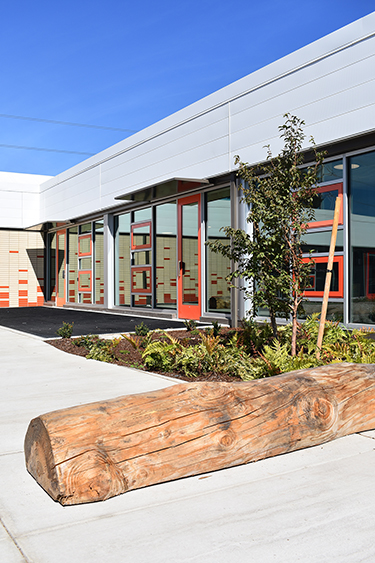|
Subscribe / Renew |
|
|
Contact Us |
|
| ► Subscribe to our Free Weekly Newsletter | |
| home | Welcome, sign in or click here to subscribe. | login |
Architecture & Engineering
| |
 |
October 26, 2017
Survey: AHBL
Specialty: Civil engineering, structural engineering, landscape architecture, community planning and land surveying; markets include K-12, housing, higher education, municipal, industrial, federal and health care
Management: Doreen Gavin, president; Doug Tapp, Dan Booth, David Follansbee, John Becker, Matt Weber, Sean Comfort, Todd Sawin and Wayne Carlson, principals
Founded: 1969
Headquarters: Tacoma
2016 revenues: $15.56 million
Projected 2017 revenues: $20 million
Projects: Landscape architect and civil engineer for the Arlington Elementary School replacement in Tacoma; civil and structural engineer, landscape architect and land surveyor for the 4218 Roosevelt Apartments in Seattle; landscape design and planting plan for a healing garden for the Whidbey Health Hospital expansion and renovation in Coupeville
Jason Morse, associate principal and director of landscape architecture in the Seattle office, answered questions about trends and issues in the industry.
Q: How might a second Amazon headquarters affect the local A/E industry?
A: Whether a future headquarters is built here or elsewhere, it stands to reason that the prosperity it represents will continue to fuel local growth. A huge number of Amazon employees, managers and shareholders will still live here and benefit from its growth no matter what happens. If our construction crane count went down from 60 to, say, 40, we’d still have 10 more than New York City and the second largest number of them in the U.S. Even if Amazon’s second headquarters is elsewhere, Seattle will still thrive, and some of us might secretly breathe a small sigh of relief if the current frenzy were to slow down just a little.
Q: What are the trends in your industry and your company locally?
A: Our industry is catching its breath and trying to figure out what the next normal is going to be. After being battered by the recession we didn’t have much downtime before we were struggling to keep pace with explosive growth. Multifamily and retail have been strong, and K-12 education has seen robust growth due to our fast-growing population. We also expect more demand for higher quality park and recreation spaces as urban and suburban communities in our region add density.
Q: How has your workload changed over the past year or two?
A: Like many other local firms, we have seen unprecedented growth in work over the last couple of years. It’s wonderful, but poses challenges. We’ve gone from taking on whatever meaningful work came our way during the post-recession recovery to a more thoughtful approach, whereby we attend to our existing clients and relationships first, and then focus on targeting new projects we are passionate about. We are also focusing more on attracting and keeping great talent. It’s a little like the stories you used to hear about tech firms in the 1990s. And while we’re not planning a pingpong lounge, we are being very intentional about internal programs to creatively engage young professionals and connect our new hires to a mentor in the firm.
Q: What can engineers, designers, developers and government do to make Seattle more livable and sustainable?
A: With all of the recent development in our city, it has been great to see some of our progressive zoning ordinances, like the Green Factor program, help to enliven our public spaces and further sustainability. As designers and engineers, we can further the goals of programs like this by coming up with the best solution for the site, rather than simply taking the fastest route to the needed point totals. We can help our clients realize that these green infrastructure amenities are not just a requirement, but rather an opportunity for their projects to be more successful.
Q: How are rising land costs in Seattle affecting what gets built?
A: Rising lands costs are encouraging more density in our city. Developers are under more pressure than ever to maximize the development potential of every parcel. Increasing density in Seattle’s urban villages, with recent up-zones for greater building heights, has resulted in a flurry of mixed-use development. As the shortage of affordable housing continues to weigh on our community, and HALA and other strategies are implemented to deal with it, this trend is likely to continue.
Other Stories:
- Ice Box Challenge: a cool test of Passive House
- Survey: Code Unlimited
- Survey: IA Interior Architects
- Surveys: NAC Architecture
- Survey: Lemons Architecture
- Is growth only benefiting a small segment in Seattle?
- Rock wool’s new role: protecting exterior wood stud walls
- Get ready for the new year — and new energy codes
- After 10-year engagement, Kinects inverts ‘wedding cake’
- WSU cultural center: ‘How are you going to build this?’
- High-performance building? Start with early design analysis
- How ‘affordable’ housing is disappearing in Seattle
- How long will your AV last? Consider your cell phone
- Survey: Arup



